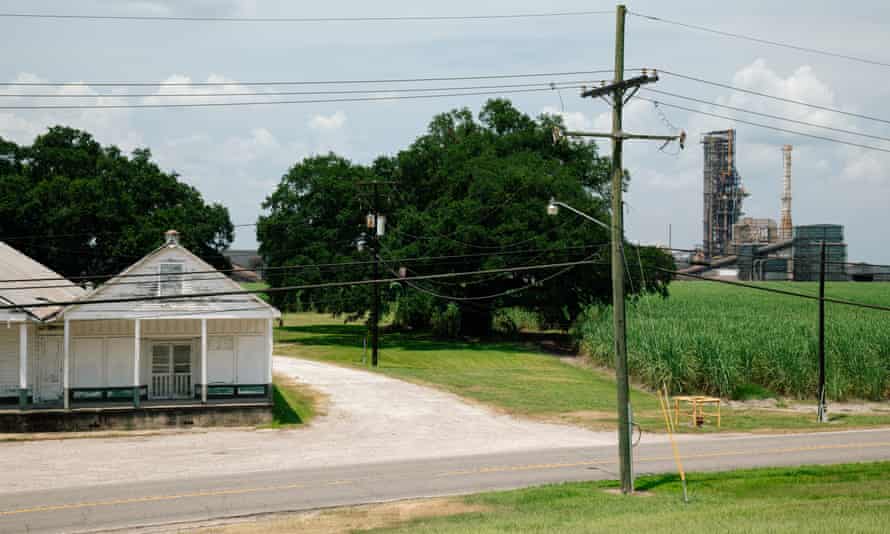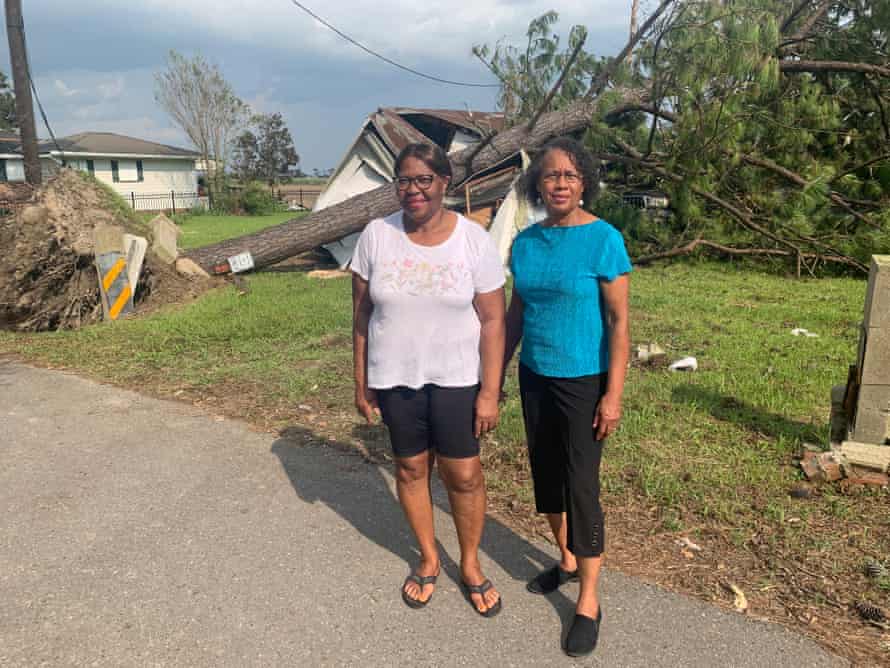The Guardian
Cancer town Louisana
‘You’re poisoning us’: Ida brings fresh hell for Cancer Alley residents already battling pollution
Hurricane hit heavily industrialized region hard shortly after it was revealed a nearby steel plant pumped sulphur gas in atmosphere for six years

As Myrtle Felton’s roof took flight from her home, with Hurricane Ida pounding the walls, she thought about the steel plant next door.
Here in St James parish, in the heart of Louisiana’s “Cancer Alley” – a heavily industrialized region between New Orleans and Baton Rouge with some of the most polluted air in America and highest risk rates of cancer – Ida hit hard.
On Felton’s small street in the small town of Romeville, downed trees crushed trailer homes. A felled electrical pylon still blocks entry four days after the hurricane passed. Many people have no generators, and there is no power. The tarmac is lined with electrical cables.
In an adjacent field, less than a mile away, the hulking Nucor steel plant casts an imposing shadow over the landscape. Just a few months ago it was revealed that the plant had been quietly pumping cancer-causing sulphuric acid mist and hydrogen sulphide into the atmosphere for six years without a permit, contributing to an already dangerous cocktail of emissions.

Felton, 67, had always attributed the rotten-smelling air to the plant, along with the black, sticky speckles on her car and the corrosion on her home. But the recent revelations left her incredulous.
As Ida blew away her already weakened metal roof, leaving brown water seeping in through the seams of her ceiling, she thought to herself: “Well, it needed replacing anyway.”
Black women like Myrtle Felton have been on the frontlines of the climate justice fight in south Louisiana for years. And now many of them find themselves bearing the brunt of a natural disaster the intensity of which is linked to the climate crisis. Down here, it’s a battle on many fronts.
“I’m in the middle of everything by myself,” said Felton. “Nobody comes, nobody calls. Nobody do anything. Whatever you get, you get it on your own.”
Three days after the storm, representatives from Nucor, a $33.7bn company that announced record profits this July, arrived offering Felton some aid: 15 small bottles of water and a pack of Gatorade.
“I’m so frustrated I can hardly talk,” Felton said.
Her neighbour, Barbara Washington, a 70-year-old local environmental campaigner put it bluntly: “Sure, give me my water, give me some Gatorade, but you’re already poisoning us.”
In a statement, a spokeswoman for Nucor said the corporation was offering two food handouts, one on Friday and one next Wednesday and that it was “actively donating supplies and support to help the community”.
The company did not respond to questions over its plant’s emissions or if the facility sustained damage during the storm.
St James parish has yet to provide any residents in Romeville with tarps, Felton and Washington said, an account confirmed by local councilman Mason Bland, who said he had been distributing water but was waiting for federal assistance for tarps.
Bland, the councilman for St James’ district four, estimated that 95% of residents in his jurisdiction had sustained serious damage.
Advocates working with community members in St James pointed to even longer-term concerns. District four of the parish, populated with 64% Black residents and with a child poverty rate of 47%, was marked in a controversial 2014 local land plan as a “residential/future industrial” zone.
The designation, also given to the parish’s fifth district, which is majority Black as well, gives industry greater planning flexibility to expand and, advocates argue, signals the local government’s intent to push the residents out as industry proliferates.
“I worry about elected officials exploiting the disaster to further reduce the populations,” said Anne Rolfes, director of the Louisiana Bucket Brigade. She argued that the lack of disaster resources in the district was indicative of the parish’s longer-term disinvestment.
“The way it’s characterized is that those are dying districts, ignoring the active role that the parish plays in killing them,” Rolfes said.
Washington, who traces her lineage in Romeville back to emancipation, charted the area’s population decline over decades. Gas stations, restaurants, a post office and a school all have left over the years, along with many younger residents who have uprooted to other locations.
“It’s almost like a ghost town now,” she said, the trauma of the storm still obvious as she spoke. Her home too sustained major damage, and she was living without power until Thursday when the Bucket Brigade provided her with a generator.

She prayed as the storm hit: “If everything else is gone, just spare our lives,” she remembered saying.
Now, the lack of these basic local resources will make recovering from Ida even harder. The drive for gas is longer. The quest for food and water more arduous.
Some of the trailer homes in Romeville appear damaged beyond repair, with many people evacuating and concerns some may not return.
Bland, the councilman, declined to comment on allegations that the parish is trying to force residents out in favor of industry.
“I can’t tie the two together right,” he said in a phone interview. “It’s not something I’m willing to make a statement on.”
But Felton and Washington made clear Ida’s destruction only strengthened their resolve to stay put.
“You come here and try to run us out,” Washington said. “But we’ve been here for generations. There’s a legacy. I was born and raised here. I could move, but I’m still here for the fight, because someone has to do it.”
















